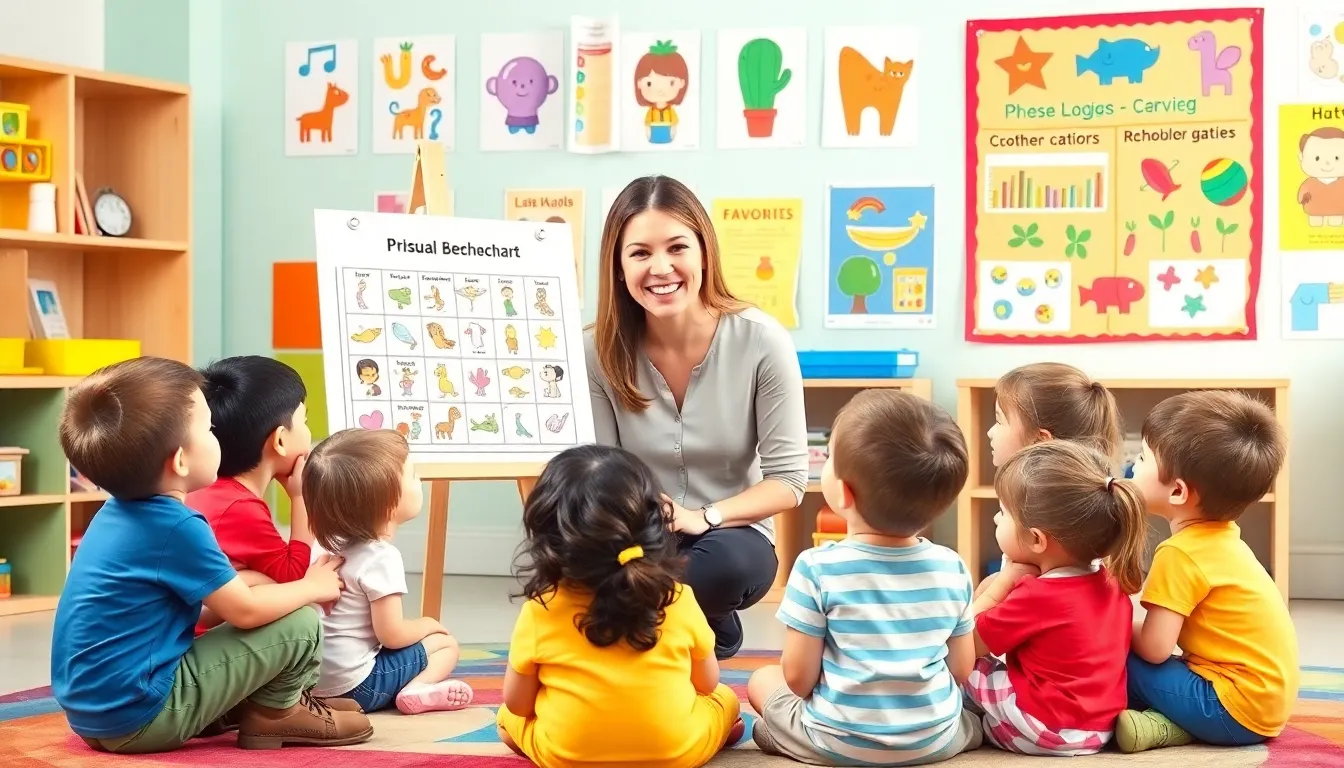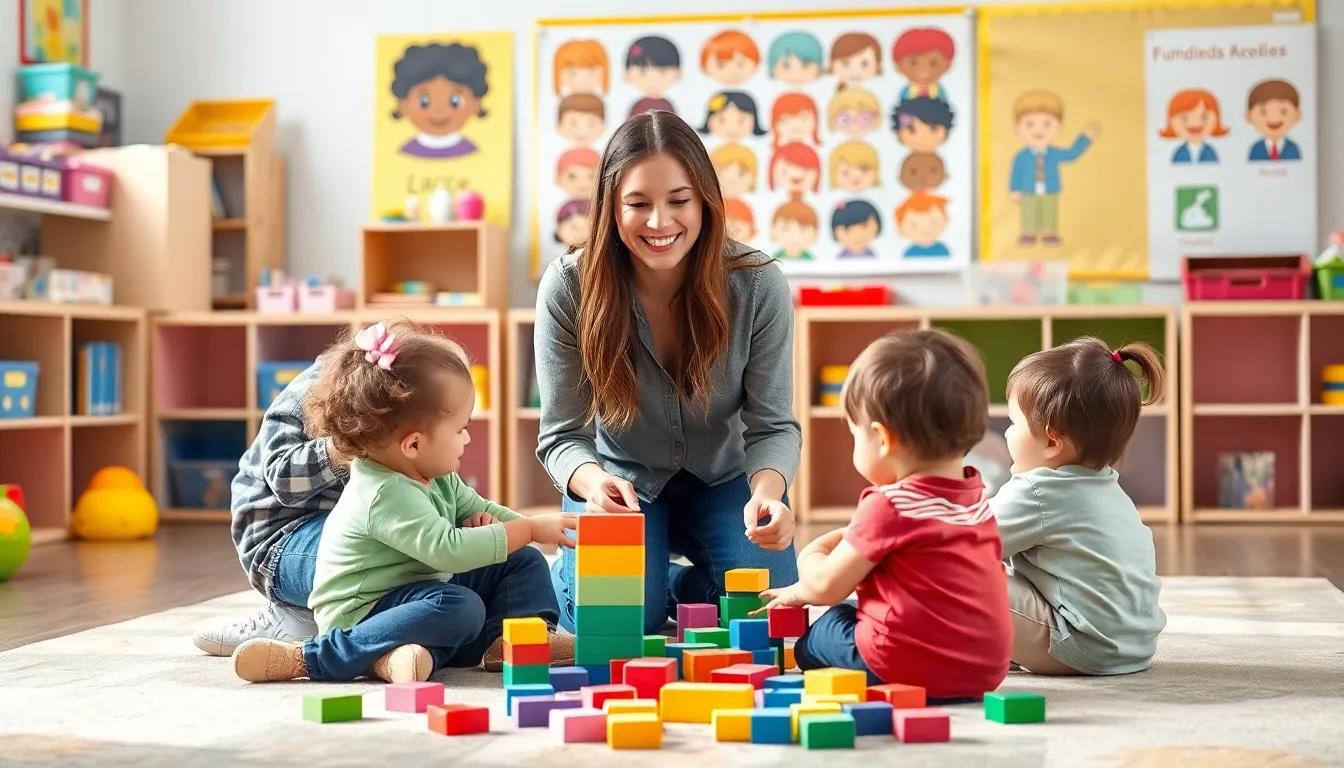Table of Contents
ToggleNavigating the world of preschool discipline can feel like trying to solve a Rubik’s Cube blindfolded. With tiny humans running around, testing boundaries, and perfecting their art of negotiation, it’s a challenge that can leave even the most seasoned parents scratching their heads. But fear not—understanding the ins and outs of effective discipline can turn chaos into calm, making the preschool years a little less like a circus and a bit more like a well-rehearsed performance.
Understanding Preschool Discipline
Understanding preschool discipline enhances the management of young children’s behavior. Effective strategies create a structured environment that promotes learning and growth.
Importance of Discipline in Early Childhood
Discipline in early childhood lays the groundwork for future behavior. It fosters self-regulation, helping children learn to manage emotions and impulses. Establishing clear boundaries creates expectations, resulting in more harmonious interactions. Developmentally appropriate discipline techniques support children in understanding consequences for their actions. Research indicates that children who experience consistent discipline exhibit improved social skills, leading to healthier peer relationships.
Key Principles of Effective Discipline
Effective discipline strategies hinge on positivity, clarity, and consistency. Using positive reinforcement encourages desired behaviors, making children feel valued. Clear communication ensures children understand expectations and consequences, reinforcing learning. Consistency across caregivers creates stability, which helps children feel secure and supported. Appropriate timing matters; addressing behaviors immediately helps children connect actions with consequences. Engaging in dialogue with children promotes awareness, allowing them to articulate their feelings and choices.
Common Discipline Strategies

Effective discipline strategies form the foundation for managing preschool behavior. These approaches enhance the overall preschool experience for both parents and children.
Positive Reinforcement Techniques
Positive reinforcement focuses on encouraging desirable behaviors. By praising children for good conduct, they are motivated to repeat those actions. Specific examples, like verbal affirmations or reward stickers, can reinforce efforts. Celebrating small achievements helps build children’s self-esteem. Caregivers should recognize the impact of consistent praise. This strategy cultivates a positive atmosphere in the classroom, making children feel valued and understood.
Setting Clear Boundaries and Expectations
Establishing clear boundaries defines acceptable and unacceptable behaviors. Caregivers communicate specific rules in a straightforward manner. For instance, using phrases like “We keep our hands to ourselves” clarifies expectations. Visual reminders, such as charts, aid in reinforcing these boundaries. Consistent enforcement of rules helps children understand consequences. Children thrive in environments where they know what is expected. This clarity fosters a sense of security, allowing them to explore and learn within defined limits.
Challenges in Implementing Discipline
Understanding the challenges in preschool discipline is essential for effective management of young children’s behavior.
Dealing with Tantrums and Meltdowns
Tantrums and meltdowns occur frequently during preschool years, making discipline particularly challenging. Recognizing triggers can aid in prevention. Offering distractions like toys or engaging activities reduces the likelihood of outbursts. Instead of responding to the behavior with frustration, caregivers should remain calm and patient. Ignoring minor tantrums often discourages attention-seeking behavior. Reflecting on feelings and discussing emotions helps children articulate their needs better. Techniques such as deep breathing or counting can also provide children with coping strategies. Responding swiftly to emotional outbursts promotes a connection between actions and consequences, ultimately fostering emotional awareness.
Cultural Considerations in Discipline Approaches
Cultural factors significantly influence discipline strategies in preschool settings. Different cultures prioritize varying values, which can lead to diverse approaches in behavior management. Some cultures may emphasize respect and obedience while others encourage independence and expression. Understanding these cultural perspectives fosters effective communication and collaboration among caregivers. Engaging parents in discussions about their values enables alignment in discipline methods. Adapting strategies to accommodate cultural differences not only enhances cooperation with families but also nurtures an inclusive environment. Recognizing and respecting these differences aids in creating a supportive atmosphere for children, ultimately improving their preschool experience.
The Role of Parents and Educators
Effective discipline in preschool requires collaboration between parents and educators. Both parties share the goal of fostering self-regulation and emotional management in children.
Collaborating for Consistent Discipline
Collaboration ensures consistency in discipline strategies between home and preschool. Parents and educators should meet regularly to discuss behaviors and expectations. Strategies should align to reinforce messages about acceptable actions. By sharing insights and techniques, caregivers create a cohesive approach. Consistent discipline across environments helps children feel secure and understand boundaries.
Building Trust and Communication
Open communication forms the foundation of trust between parents and educators. Sharing daily experiences, successes, and challenges creates a supportive network. Parents should feel comfortable discussing their concerns and values about discipline. Educators need to provide feedback on children’s progress and behavior. Engaging in regular dialogues fosters a partnership that enhances the preschool experience for children.
Navigating preschool discipline is a journey that requires patience and understanding. By implementing effective strategies and maintaining open communication between parents and educators, caregivers can create a nurturing environment where children thrive. Establishing clear boundaries and using positive reinforcement lays a solid foundation for self-regulation and emotional growth.
Addressing behaviors promptly and fostering dialogue about feelings empowers children to make better choices. Embracing cultural differences and collaborating with families enhances the overall discipline approach. This partnership not only supports children’s development but also enriches their preschool experience, paving the way for future success in their social interactions.




